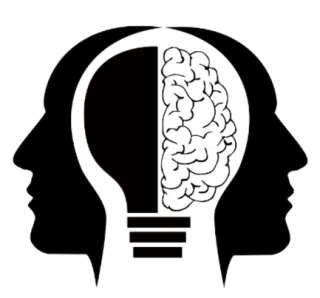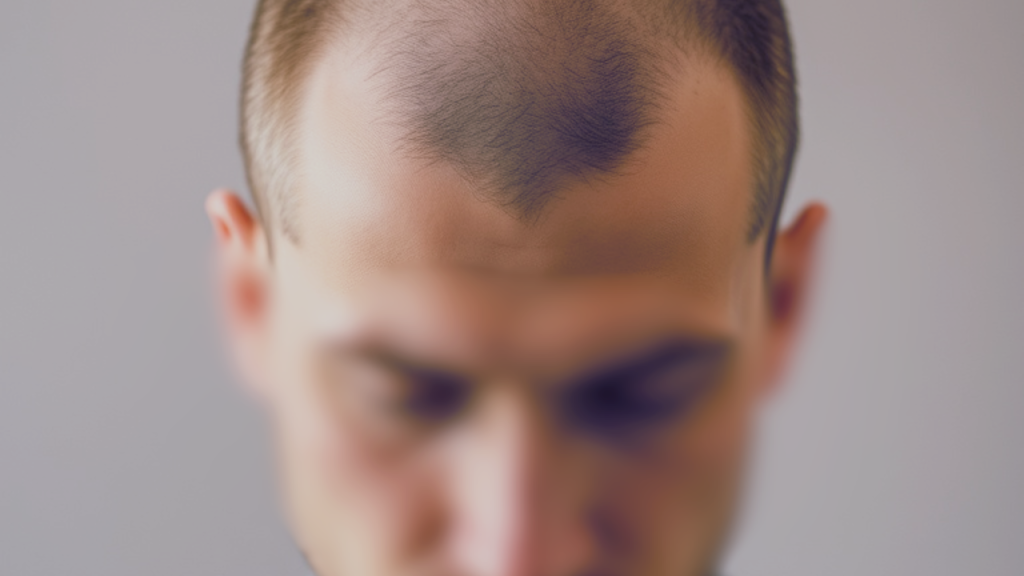It’s strange how confidently people claim that male pattern baldness is all about testosterone or DHT. The term itself—“male pattern baldness”—has boxed the conversation into a narrow and misleading narrative. For one, the condition isn’t even exclusive to men. A striking number of older women—more than half, according to some studies—develop similar patterns of hair thinning and loss. The same crown recession, the widening part, the gradual vanishing of hair density. If high DHT were the problem, then shouldn’t women with hair loss have unusually elevated testosterone or DHT levels? They don’t. Most don’t even have “high-normal” levels. In fact, they often have low androgens altogether. That alone should cast doubt on the dominant story. But the endocrinology of hair loss is more complex, and far more interesting, once you stop trying to pin it on one scapegoat.
When you dig into the physiology, a very different picture starts to emerge. One that implicates not a singular “male” hormone, but an interconnected system breaking down—primarily centered around energy metabolism, the thyroid, and stress hormones. Hair loss, as it turns out, is not a testosterone disease. It’s a stress disease. A metabolic disease. A systemic energy problem.
One of the key contributors appears to be hypothyroidism. It doesn’t have to be severe to start interfering with the body’s ability to maintain youthful tissues, like skin and hair. Even mild thyroid deficiency alters the entire endocrine landscape.
Thyroid governs metabolic rate—how much energy the body can produce. So when it drops, the body shifts into conservation mode. It produces more TSH to try to stimulate the thyroid back into action. Cortisol starts climbing, as do other adrenal hormones like androstenedione, which is easily aromatized into estrogen in peripheral tissues. Prolactin goes up. The whole hormonal profile becomes more catabolic, more inflammatory, more estrogenic—and less conducive to growth, repair, or tissue stability.
Contrary to what people expect, studies show no consistent link between elevated DHT and hair loss. In fact, there’s very little evidence at all that exogenous testosterone or DHT therapy causes baldness. Some men taking DHT actually report increased scalp hair. And the androgens produced in hypothyroid states—especially the adrenal kind—are more likely to feed into estrogen than into any meaningful “masculine” pathway. Androgenic alopecia is not driven by androgen excess—it’s driven by poor androgen metabolism. Estrogens, cortisol, and prolactin—the real players behind the curtain—are elevated in most people with pattern hair loss, male or female.
The real trigger is a sluggish metabolic state, with slow thyroid output and dysfunctional mitochondrial energy production. In this low-energy state, the body compensates by producing stress hormones, relying on adrenaline and cortisol to get things done. These hormones shift metabolism away from long-term growth and toward short-term survival. Hair follicles are incredibly energy-intensive structures. They require a fast, efficient turnover of nutrients, ATP, and signaling molecules. When metabolism slows and stress ramps up, hair growth is one of the first things to suffer. The body starts pulling resources away from non-essential systems. The result is thinning, miniaturization, and shedding. Not because of an androgen flood, but because of a lack of energy and a surplus of stress.
Estrogen can appear to stop hair balding or thinning in some studies—but it’s crucial to understand how it does so and why this doesn’t necessarily mean it’s treating the root cause.
Here’s what’s happening beneath the surface:
Estrogen lowers adrenal androgens
In many people with hair loss, especially women, the issue isn’t high testosterone or DHT, but excess adrenal activity. Under hypothyroid or high-stress conditions, the body ramps up production of adrenal steroids like androstenedione, which gets easily converted into estrogen or testosterone in peripheral tissues. Estrogen therapy (like birth control or hormone replacement) can suppress adrenal androgen output, reducing the pool of precursors that would otherwise become problematic.
So paradoxically, giving estrogen can reduce some of the stress-induced hormonal chaos—temporarily.
Estrogen can blunt the stress response
Estrogen has anti-inflammatory properties. It can lower TSH, cortisol, ACTH, and prolactin to a degree. In other words, it puts the brakes on the stress cascade, especially in women going through menopause or in people with underlying hypothyroidism.
By doing so, it makes the hormonal environment temporarily less hostile to the hair follicle, leading to reduced shedding and better retention.
Estrogen suppresses immune responses
In certain forms of hair loss like alopecia areata, which have autoimmune involvement, estrogen can downregulate immune activity and reduce follicular attack. Again, this is not healing the core issue, but blunting one layer of dysfunction.
So why isn’t estrogen a real cure?
Because it’s not fixing the mitochondrial problem. Hair growth is energy-intensive. It requires a robust metabolic rate, healthy thyroid function, low cortisol, and proper androgen metabolism. Estrogen doesn’t enhance any of these. In fact, chronically high estrogen contributes to mitochondrial inhibition, local fibrosis, reduced blood flow, and immune dysfunction over time.
Estrogen can pause the symptoms of stress and energy collapse, but it doesn’t reverse them. It may make someone feel and look better short-term, especially if they’re in a deep hormonal hole. But it’s more of a cosmetic bandaid than a functional repair particularly when it dominates without balance from progesterone or adequate thyroid function. Estrogen can promote fibrosis in scalp tissues and restrict blood flow to hair follicles. It alters immune function and increases histamine activity, further aggravating the inflammatory microenvironment in the scalp. This isn’t just about circulating estrogen, but local estrogen formation from adrenal precursors like androstenedione, converted in fat and skin tissues. This local hormone action is often missed in blood tests but is highly active in hair loss.
HAIR-RAISING
TEST – ESTROGEN LINKED TO BALDNESS
This is why hair loss correlates so strongly with periods of psychological or physical stress, poor sleep, rapid weight loss, malnutrition, chronic illness, overtraining, and long-term exposure to environmental stressors like endocrine-disrupting chemicals. These are all states that deplete thyroid output and force the body into reliance on adrenal hormones. Hair loss, then, is a barometer of systemic stress, not a standalone scalp issue.
How chronic
stress leads to hair loss
In the context of elevated estrogen, the body’s ability to utilize DHT correctly becomes compromised—not because DHT is harmful, but because the surrounding hormonal terrain has become estrogen-dominant. Furthermore, enzymes such as 3α-hydroxysteroid dehydrogenase become more active under the influence of stress and inflammation, converting DHT into weaker, estrogenic metabolites like 3α-androstanediol. This conversion undermines DHT’s beneficial effects in the brain, prostate, and skin, often producing the very symptoms that DHT is accused of causing: mood swings, irritability, prostate growth, and hair thinning. But the problem isn’t DHT—it’s that the DHT isn’t allowed to remain DHT.
Prolactin is another stress-induced hormone that affects hair. Elevated in both men and women with hypothyroidism, it disrupts normal reproductive hormone balance and can act directly on hair follicles to suppress growth. High prolactin is associated with autoimmune conditions, irregular menstrual cycles, low libido, and yes—hair loss.
All of this points to the fact that the solution to hair loss isn’t about blocking androgens. It’s about restoring thyroid function, lowering stress hormones, reducing estrogenic dominance, and protecting mitochondrial function. When the thyroid is supported, metabolism picks up. Cortisol and prolactin fall. Estrogen becomes better balanced. And the scalp once again becomes a hospitable place for hair to grow. Supporting metabolic health with the right diet, nutrients, and lifestyle adjustments can make a massive difference—often more than any topical product or drug.
Hair loss is not some isolated cosmetic issue. It’s a systemic signpost. It tells you something is off deep inside, at the hormonal and cellular levels. So if you’re tired of chasing surface-level fixes and blaming DHT, it might be time to take a step back and look at the bigger picture. It’s not about male hormones. It’s about the state of your entire endocrine system. And if that’s the case, then real progress starts with restoring energy—because the future, and your hairline, still belongs to those with energy.
If this has challenged what you thought you knew about hair loss, hormones, or health in general, there’s more where that came from. Apophenia is a free forum where we go deeper into these topics—from energy metabolism and thyroid function to stress, behavior, and beyond. It’s not just discussion; there’s also a free document available there that breaks down the fundamentals of energy and human function—how it connects everything from mood to metabolism to aging. If you’re looking for clarity in a world full of confusion, or just tired of surface-level advice, come join us. No gimmicks, just real conversations.
The term “Apophenia” is described as the tendency to perceive a connection or meaningful pattern between seemingly unrelated or random things, such as objects or ideas, and similarly deemed by psychologists as the human tendency to see connections and patterns that are not really there.

